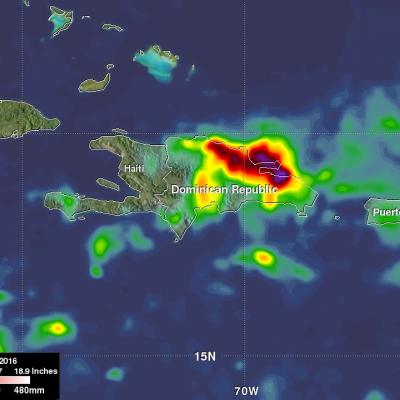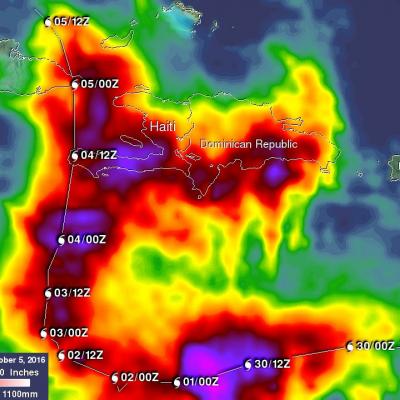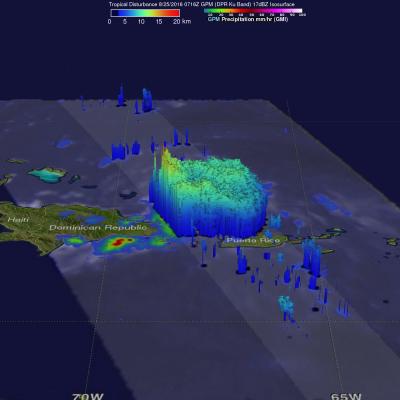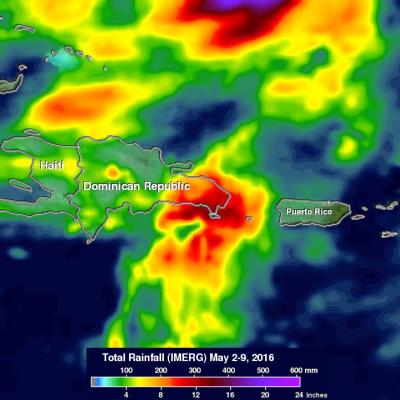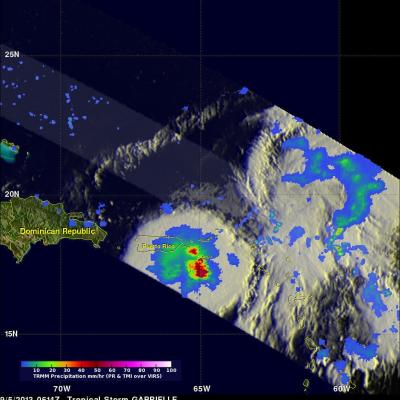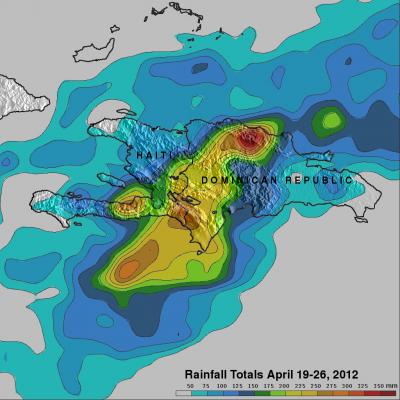Deadly Tropical Rainfall Examined by IMERG
Scattered to numerous showers and scattered thunderstorms have occurred over Hispaniola during the past week. Slow moving frontal systems draped over Hispaniola and a tropical wave recently caused heavy rainfall that led to wide spread flooding over the northern Dominican Republic. Over 20,000 people have been displaced from their homes and at least five deaths have been reported. A broad area of low pressure (90L) in the southwestern Caribbean is also being monitored for possible tropical cyclone development by the National Hurricane Center (NHC). Very warm sea surface temperatures and upper


